Picture Guide to Different Dinosaurs
Welcome to the Active Wild list of dinosaurs. This page contains a list of dinosaur names with pictures and information. Here you can learn about the many different kinds of dinosaur that existed in the Mesozoic Era.
Designed to be an 'online dinosaur museum', it's a great place to start if you want to find out more about a particular dinosaur.
- You can find out more about dinosaurs here: Dinosaur Facts
- You can find out about the time periods of the Mesozoic Era (Triassic, Jurassic & Cretaceous) on this page: Dinosaur Periods
On the following pages, you can find out about specific periods of the Mesozoic Era:
- Discover the Triassic Period
- Discover the Jurassic Period
- Discover the Cretaceous Period
Want to see more dinos? If you're interested in seeing dinosaurs from specific periods, check out the following pages:
- Triassic Dinosaurs List with Pictures & Facts
- Jurassic Dinosaurs List with Pictures & Facts
- Cretaceous Dinosaurs List with Pictures & Facts
List of Dinosaurs: Dinosaur Names with Pictures
Below you'll find a list of dinosaurs with pictures and information. You can follow links in the text to find out more about certain species.
This list includes all of the most famous dinosaurs together with many lesser-known species. How many dinosaurs on the list had you heard of? Have we missed any interesting dinos out? What's your favorite dinosaur?
Let us know by leaving a comment at the bottom of the page!
Abelisaurus

We start our list of dinosaurs with Abelisaurus, a predatory theropod dinosaur of the late Cretaceous Period. Abelisaurus was a medium-sized, bipedal* dinosaur that was probably between 7 and 9 metres (23 and 29 ft.) in length.
* An animal is said to be 'bipedal' if it walks on two legs.
Everything that we know about Abelisaurus comes from a single, incomplete skull! From this fossil scientists have been able to deduce the dinosaur's likely lifestyle, diet and size.
Being able to piece together a picture of how dinosaurs lived from the limited clues available to us is an important part of paleontology. (Paleontology, or palaeontology in British English, is the scientific study of prehistoric life. )
- Find out more about abelisaurus here: Abelisaurus Facts.
Albertosaurus
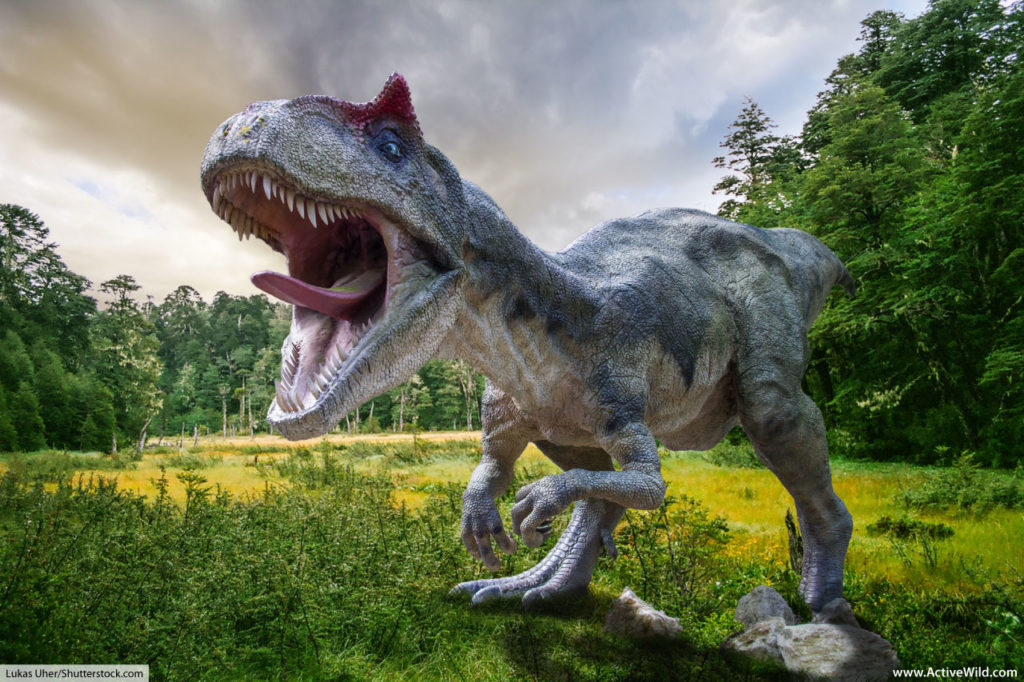
Albertosaurus was a close relation of Tyrannosaurus, and was in the same family, Tyrannosauridae. Looking very much like its more famous relative, Albertosaurus walked on two legs, and had small arms. It would have been a fast runner, and probably sat at the very top of the food chain.
Albertosaurus had crests above its eyes which may have been brightly coloured. Unlike Tyrannosaurus, whose eyes pointed forwards, its eyes were on the sides of its head.
- You can read more about albertosaurus here: Albertosaurus Facts
Allosaurus
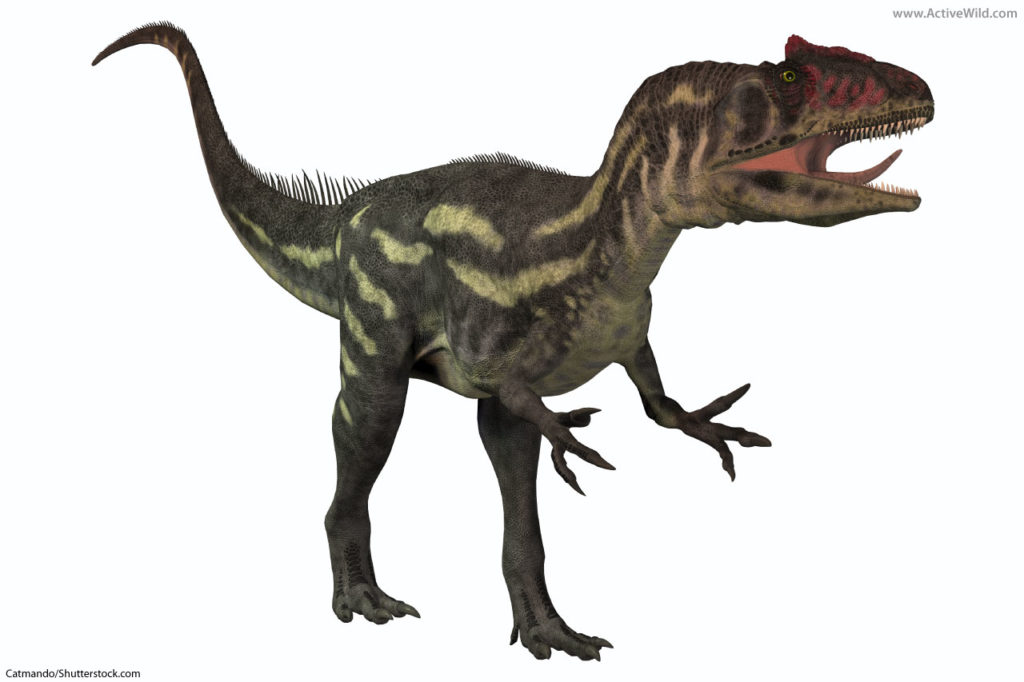
Allosaurus was one of the largest predators of the Jurassic Period. It would have reached lengths of around 12 metres (40 ft.), and weighed between 2 and 5 metric tonnes (2.2 and 3.3 short tons).
Allosaurus preyed on dinosaurs such as Stegosaurus, and may even have hunted huge Jurassic Sauropods such as Diplodocus and Apatosaurus.
- You can find out more about allosaurus here: Allosaurus Facts
Ankylosaurus
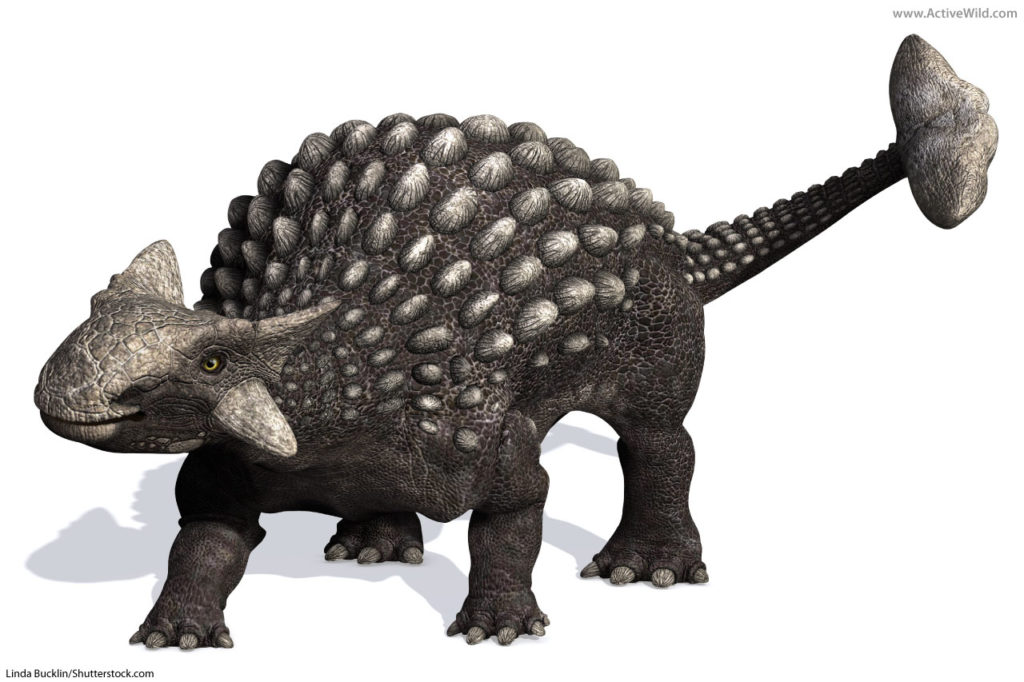
Ankylosaurus was a member of a group of dinosaurs called Ankylosauria. Their name means 'fused together lizards' on behalf of their joined-together armoured plates.
Ankylosaurians were members of a larger group of dinosaurs called Thyreophora, otherwise known as the 'shield-bearers', or 'armored dinosaurs'. This group also included Stegosaurians such as stegosaurus.
Ankylosaurus was around 10 metres (33 ft.) in length and weighed around 5 metric tonnes (5.5 short tons). It had a bony club at the end of its powerful tail. This would have been an effective weapon against predators.
- Find out more about ankylosaurus here: Ankylosaurus Facts.
Apatosaurus
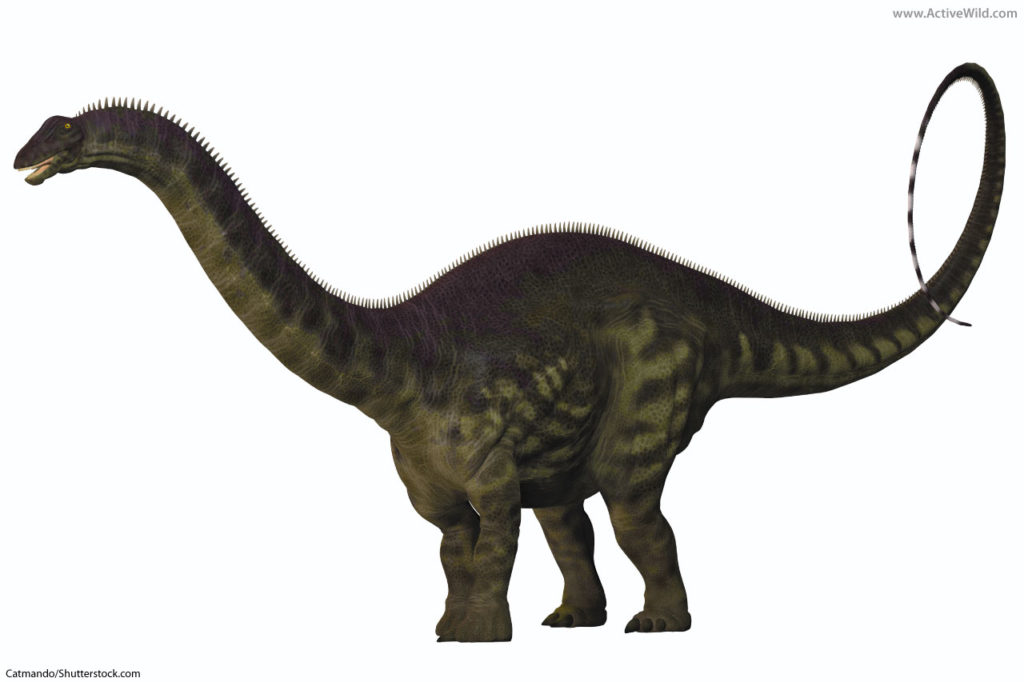
Apatosaurus was a huge sauropod dinosaur. It lived in the late Jurassic Period. It weighed between 20 and 30 metric tonnes (22 and 33 short tons), and was around 20 to 23 metres (65 and 75 ft.) in length.
Apatosaurus achieved its colossal size by eating plants rather than meat. It may have used its long tail as a whip to protect itself from predators.
Brontosaurus was discovered after Apatosaurus. At the time it was thought to be a different dinosaur, but it was later found to be an Apatosaurus. However, the name 'Brontosaurus' had become so widely-used that many people still think that they are different dinosaurs.
There's a twist in the tail: recent studies have found that the Brontosaurus may not be an Apatosaurus after all!
- You can find out more about apatosaurus here: Apatosaurus Facts
Archaeopteryx

If you can imagine a cross between a small dinosaur and a bird, then you'll probably have a good idea of what Archaeopteryx looked like. It had the tooth-filled mouth and bony tail of a dinosaur, with the feathered wings of a bird. It may even have been able to fly, rather than simply glide.
Archaeopteryx lived in the late Jurassic Period. Animals like archaeopteryx (but possibly not archaeopteryx itself) were the ancestors of all today's birds. Many scientists now consider birds to be dinosaurs!
- Read more about Archaeopteryx here: Archaeopteryx Facts
Baryonyx

Baryonyx was a two-legged, fish-eating dinosaur that lived in the early Cretaceous Period.
In 1983, amateur fossil collector William J. Walker came across a strange fossil. He alerted the Natural History Museum in London, who realised that he had made an important find.
After further digging, palaeontologists uncovered around three-quarters of a new dinosaur. It was named Baryonyx walkeri, in honour of its discoverer.
- Find out more about Baryonyx here: Baryonyx Facts
Brachiosaurus

This huge sauropod grew up to 25 metres (82 ft.) in length and weighed between 30 and 50 metric tonnes (33 and 55 short tons). It was one of the largest land animals ever. Brachiosaurus's name means 'arm lizard', because of the way its forelimbs joined its shoulders.
Unlike other sauropods, Brachiosaurus's front legs were longer than its hind legs.
- You can find out more about Brachiosaurus here: Brachiosaurus Facts.
Brontosaurus
(See Apatosaurus)
Carnotaurus
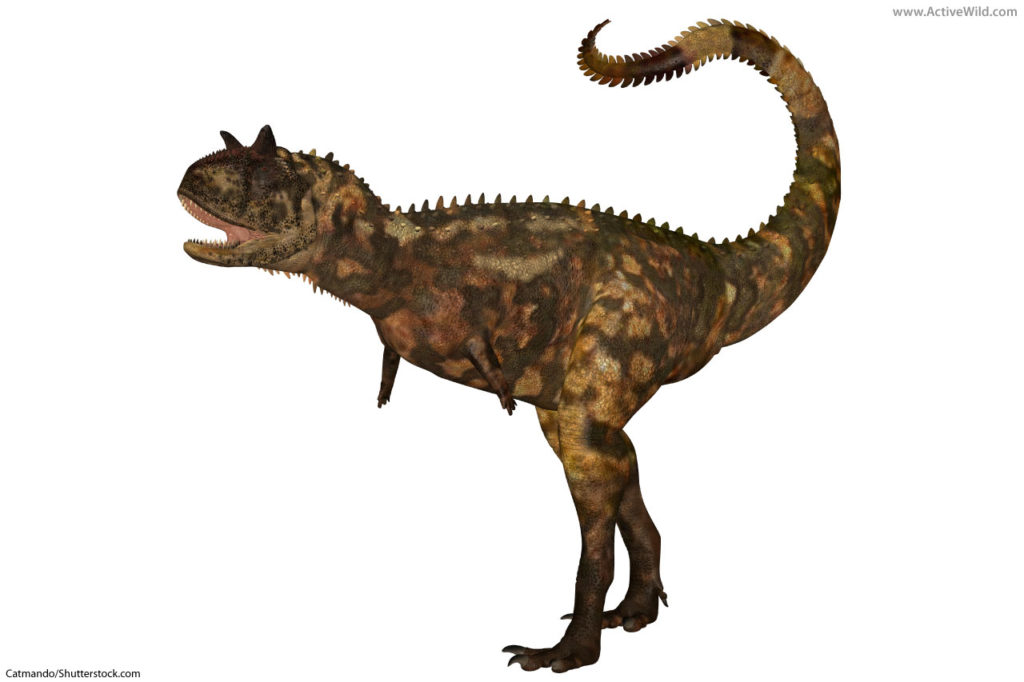
Carnotaurus was a large, fast-moving predator that walked on two legs. It was around 9 metres (30 ft.) in length, and weighed around 1.35 metric tonnes (1.5 short tons).
This distinctive meat-eater had two horns on its head. Its name means 'meat-eating bull' on behalf of these bull-like horns.
- Find out more about Carnotaurus here: Carnotaurus Facts.
Coelophysis

Coelophysis is one of the earliest known dinosaurs. It lived in the late Triassic Period. Despite their great age, many Coelophysis fossils have been found.
Coelophysis was a small and lightly-built dinosaur. It would have been nimble and fast, and may have hunted in packs.
Compsognathus
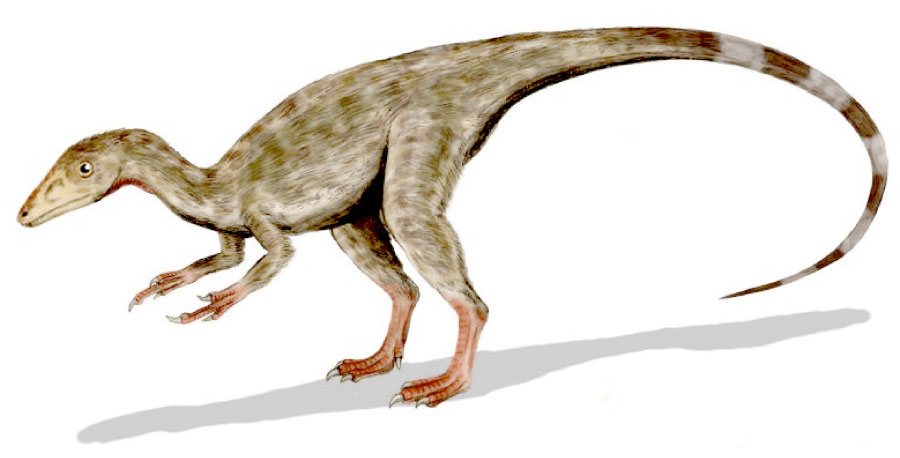
Only two Compsognathus specimens have been discovered. The first was found in Germany in the mid-nineteenth century. The second was found in France over 100 years later, in 1971.
Compsognathus lived during the late Jurassic period.
This bird-like bipedal predator was famous for many years for being one of the smallest dinosaurs. Since the end of the twentieth century, however, several smaller dinosaurs have been discovered.
Deinonychus
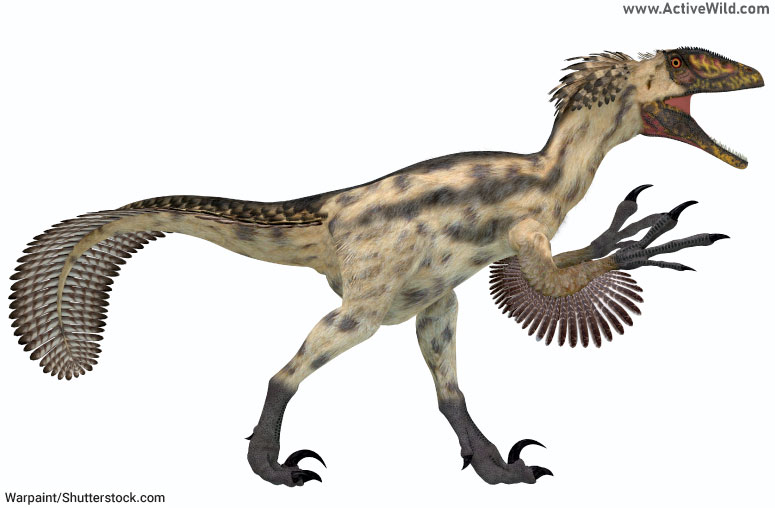
This early Cretaceous dinosaur grew to around 3 metres (10 ft.) in length and weighed around 80 kg (176 lb). Its name, which means 'terrible claw', refers to the deadly claw found on each of its feet.
While small compared to other dinosaurs, Deinonychus was built for speed, and would have been an effective predator. It had long forelimbs and powerful clawed 'hands'.
Diplodocus
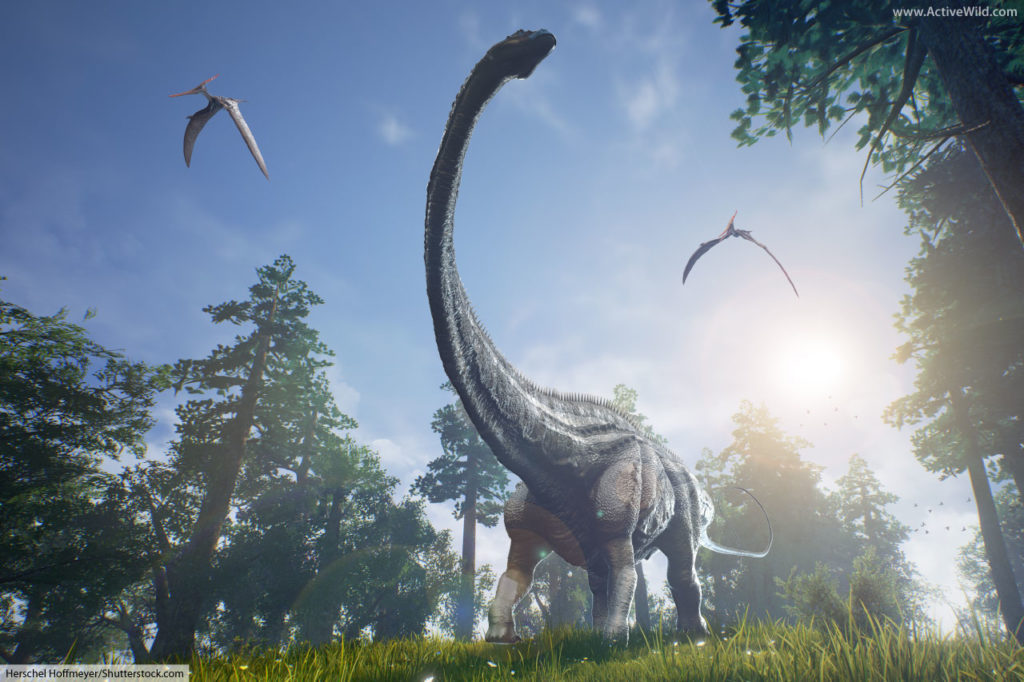
Diplodocus, like all other sauropods, was a giant, four-legged dinosaur with a long neck and tail. It may have used its long tail as a whip for protection against predators.
Diplodocus was around 25 metres (82 ft.) in length. It weighed between 10 and 26 metric tonnes (11 and 29 short tons). It lived in North America during the late Jurassic Period.
- Find out more about Diplodocus here: Diplodocus Facts.
Edmontosaurus
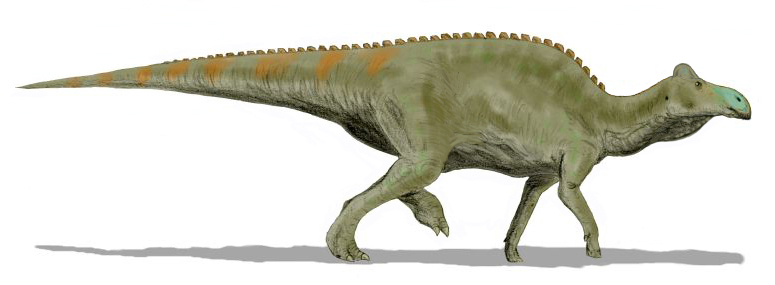
Edmontosaurus was a large herbivorous dinosaur. It was a member of the 'duck-billed' group of dinosaurs, so-called due to their duck-like mouths. Herds of edmontosaurus roamed western North America in the late Cretaceous Period.
Edmontosaurus would have walked on its longer hind legs for most of the time. By studying its teeth, paleontologists can tell it was a grazer. While grazing it would probably have walked on all four legs.
Giganotosaurus

Giganotosaurus means 'giant southern lizard'. This giant predator walked on two legs and was even bigger than Tyrannosaurus.
Giganotosaurus was around 16 metres (62 ft.) in length and weighed 8 metric tonnes (9 short tons). It was likely to have had good senses of both sight and smell.
Giganotosaurus was found in South America during the late Cretaceous Period.
- You can find out more about Giganotosaurus here: Giganotosaurus Facts.
Gorgosaurus
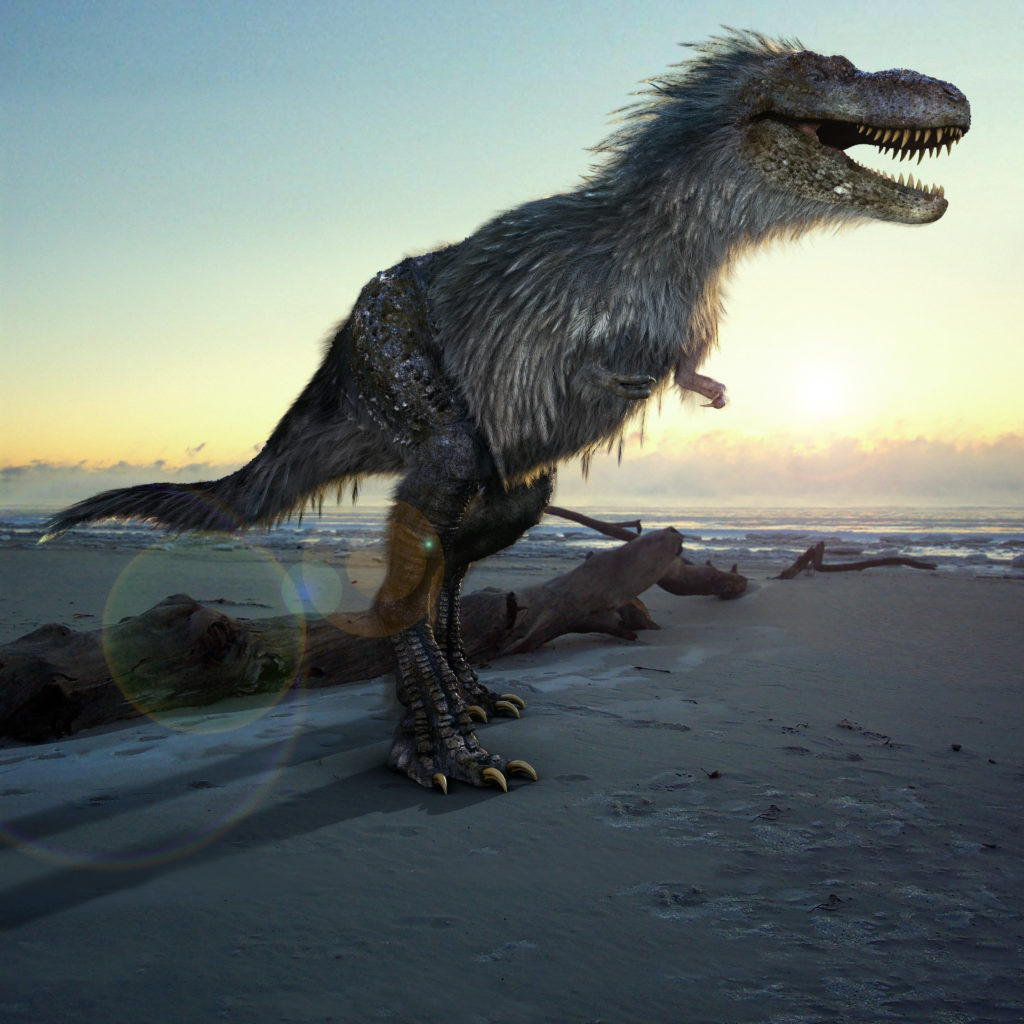
With a huge skull and jaws filled with sharp teeth, Gorgosaurus definitely lived up to its name, which means 'dreadful lizard'.
Gorgosaurus was a close relative of tyrannosaurus, being in the same family, Tyrannosauridae. Gorgosaurus lived in the late Cretaceous Period and was found in America and Canada.
- Find out more about Gorgosaurus here: Gorgosaurus Facts
Iguanodon
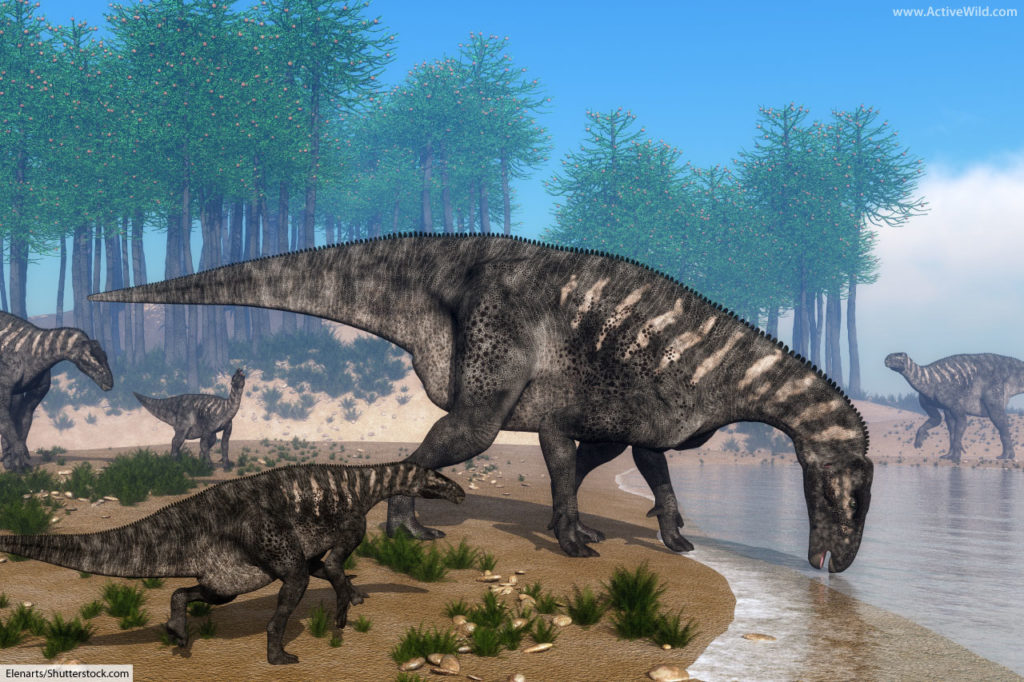
Iguanodon was the second dinosaur ever to be named. The first Iguanodon fossil was a tooth. It was discovered in England by the wife of medical doctor and geologist Dr Gideon Mantell. Mantell named the specimen Iguanodon, because the tooth resembled that of an iguana.
Iguanodon was a large, plant-eating dinosaur, able to walk on two and four legs. It lived in the early Cretaceous Period.
Iguanodon had spiked thumbs. These may have been used either as a means of defence against predators or for fighting with other Iguanodons.
- Find out more here: Iguanodon Facts
Leaellynasaura

This small bipedal dinosaur was just under 1 metre (3 ft.) in length. It was first discovered in the Australian dinosaur hotspot Dinosaur Cove.
Leaellynasaura lived in the early Cretaceous Period. It may have been fully-feathered.
Megalosaurus
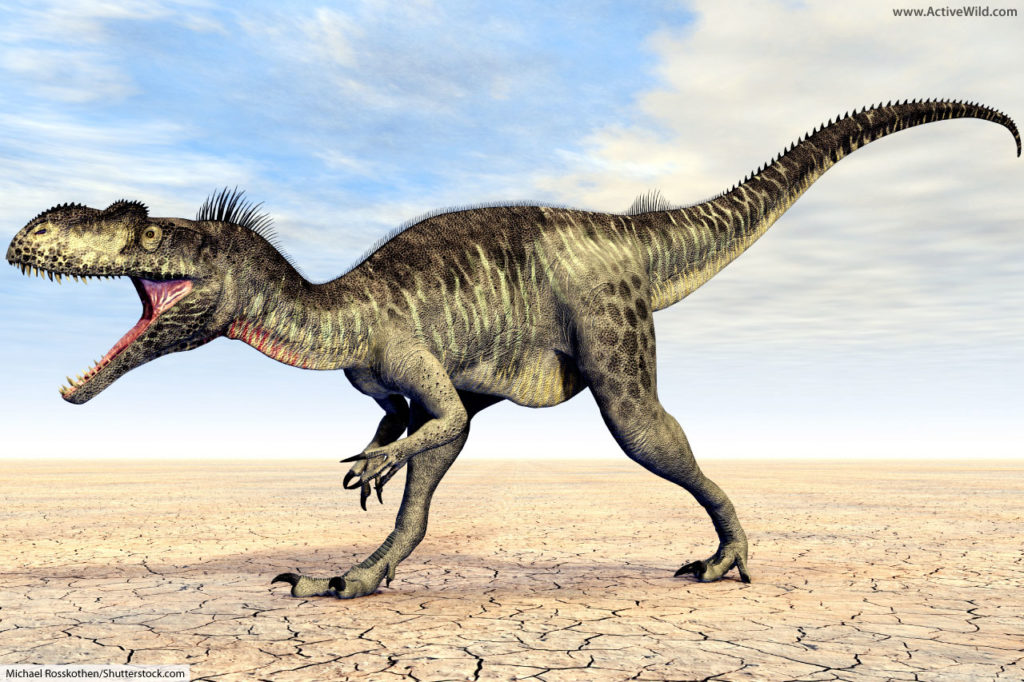
Megalosaurus was discovered in England. It was the first dinosaur to be named. Surgeon and geologist James Parkinson identified some fossilised remains as being those of a reptile. He named it 'Megalosaurus', which means 'great lizard'. This was in 1824: almost twenty years before Sir Richard Owen invented the word 'dinosaur'!
Megalosaurus was around 9 metres (30 ft.) in length and weighed around 1 metric tonne (1.1 short tons). It stood on two legs, and was a predator. It lived in the middle Jurassic Period.
- You can find out more about Megalosaurus here: Megalosaurus Facts
Minmi

Minmi was a heavily armoured small dinosaur of the Ankylosauria family. Its body, including its undersides, was covered with bony plates. It had longer legs than most of its relatives, suggesting that, despite being heavily armoured, it could move quickly.
Minmi fossils have been discovered in Australia. It lived in the early Cretaceous Period.
Ornithomimus

Ornithomimus was an ostrich-like dinosaur. Around 3.5 metres (11.5 ft.) long, Ornithomimus had long legs and a long, thin neck. It would have been able to run at high speeds, possibly reaching over 40 mph (64 km/h).
Ornithomimus means 'bird mimic'. It is so-named due to its bird-like feet. Fossils suggesting Ornithomimus had feathers have been found.
Parasaurolophus
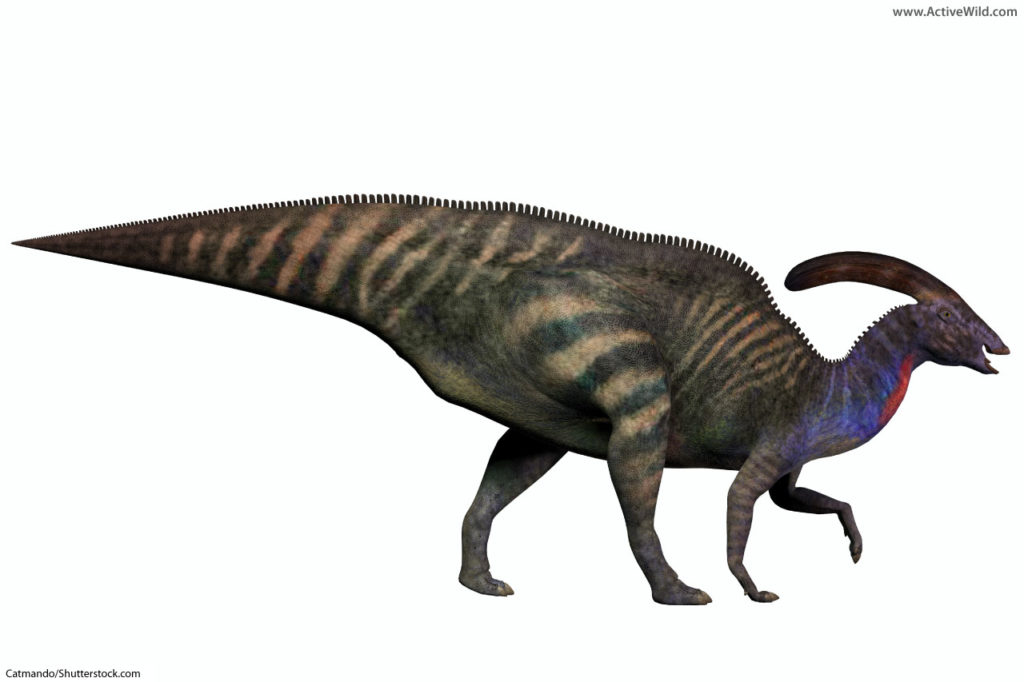
Parasaurolophus was a Late Cretaceous herbivore. It was around 10 metres (33 ft.) in length and weighed around 3.5 metric tonnes (4 short tons).
Parasaurolophus had a distinctive crest at the back of its head. Tubes inside of this crest were connected to its nostrils.Scientists speculate that this arrangement may have been used to produce sound.
Parasaurolophus had a tall but narrow tail. Males may have had brightly-colored tails in order to attract females.
- You can find out more about Parasaurolophus here: Parasaurolophus Facts.
Protoceratops

Protoceratops was a sheep-sized dinosaur of the late Cretaceous Period. It had jaws shaped like a parrot's bill, and a mouthful of teeth for eating tough vegetation. A frill on the back of its head may have served to protect its neck.
In Mongolia, a fossilised protoceratops was found entwined with a fossilised velociraptor. The velociraptor may have been attacking the protoceratops before a land slip buried both animals.
Spinosaurus
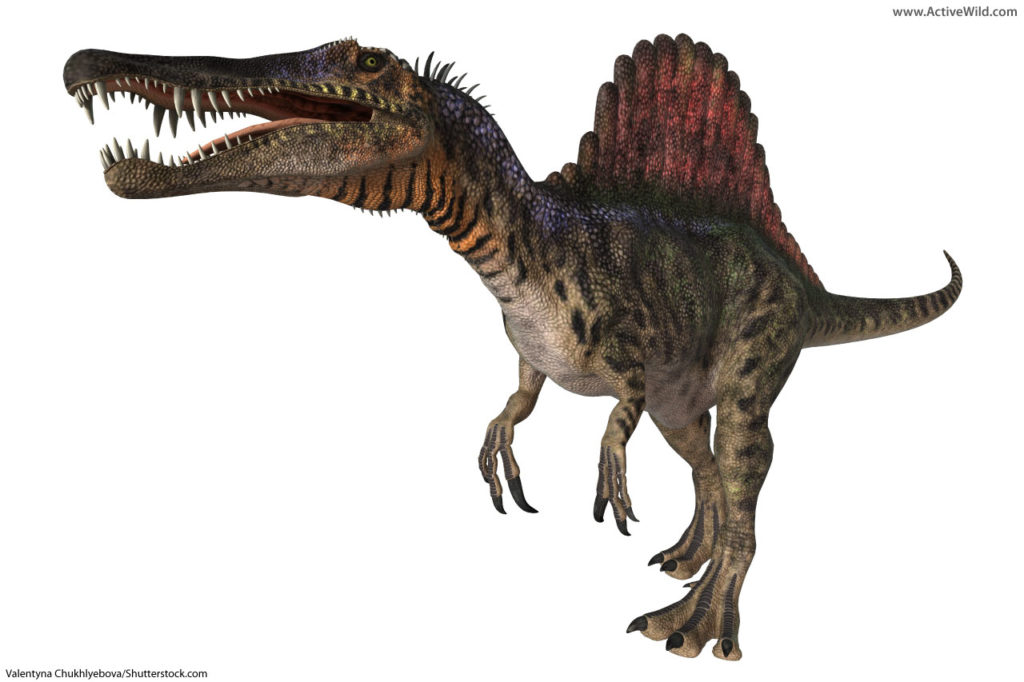
Spinosaurus was a meat-eating dinosaur of the late Cretaceous Period. Growing up to 15 metres (49 ft.) in length and 23 metric tonnes (25.35 short tons) in weight, it was larger than the mighty Tyrannosaurus Rex.
Spinosaurus was quite possibly the largest predator ever to have walked the earth.
Spinosaurus means 'thorn lizard' or 'spine lizard'. The name comes from Spinosaurus's most distinctive feature: a large 'sail' on its back, which consisted of spines covered by a layer of skin.
Scientists think that this bony sail helped spinosaurus to warm up faster than other dinosaurs, allowing it to hunt when others could not.
- You can find out more about Spinosaurus here: Spinosaurus Facts.
Stegoceras
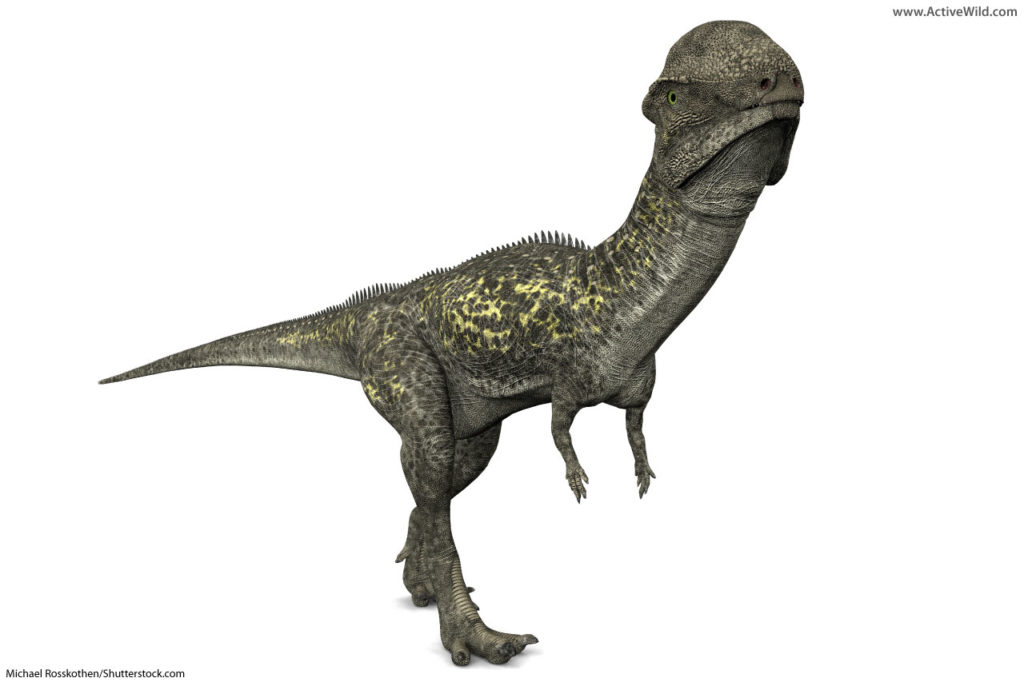
Stegoceras was a bipedal herbivore that lived in North America during the late Cretaceous Period. It was around 2 metres (6.5 ft.) in length and stood around .75m (2.5 ft.) tall.
Stegoceras was a Pachycephalosaurian; a 'dome-headed dinosaur' with a very thick skull. It was probably a herd animal.
Stegosaurus
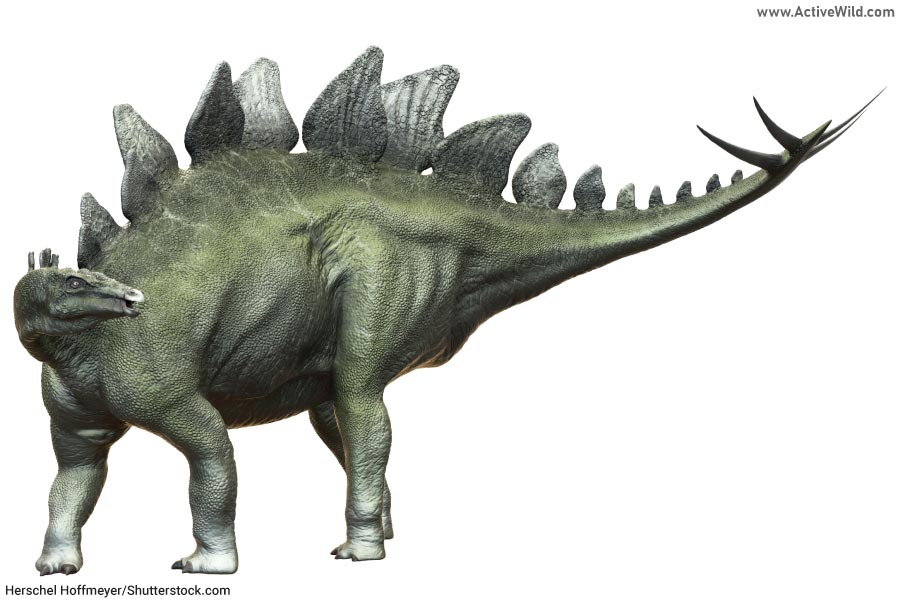
Stegosaurus was a large plant-eating dinosaur in the Stegosauridae family. It roamed America during the late Jurassic period.
Stegosaurus grew to around 9 metres (30 ft.) in length, and weighed around 2 metric tonnes (2.2 short tons). This large dinosaur was no rocket scientist; itsbrain was around the size of a walnut!
Stegosaurus had a row of large bony plates running along the top of its back. There are various explanations as to what the plates were for. Some scientists think that they offered protection from predators, others believe that they helped the animal stay at the correct temperature.
Stegosaurus was able to defend itself with a cluster of spikes on its tail.
- Find out more about Stegosaurus here: Stegosaurus Facts.
Suchomimus

Suchomimus was a member of the Spinosauridae family of dinosaurs, and a relative of Spinosaurus.
Like Spinosaurus, Suchomimus had a spiny sail on its back and a long, crocodile-like face. It lived in Africa during the early Cretaceous Period.
Triceratops
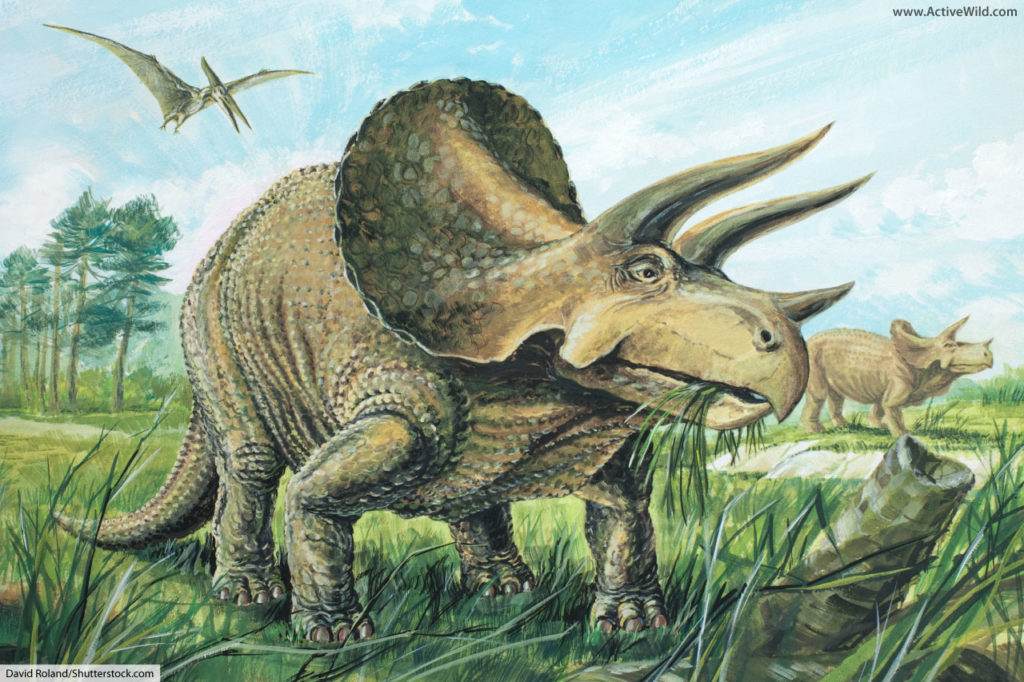
Triceratops' name means 'three-horned face'. This fearsome-looking herbivore was found in western America during the late Cretaceous Period. It may have lived in herds.
Triceratops was a large, heavily built dinosaur. It would have been able to put up quite a fight if attacked by meat-eaters such as Tyrannosaurus or Albertosaurus.
- You can find out more about Triceratops here: Triceratops Facts.
Troodon
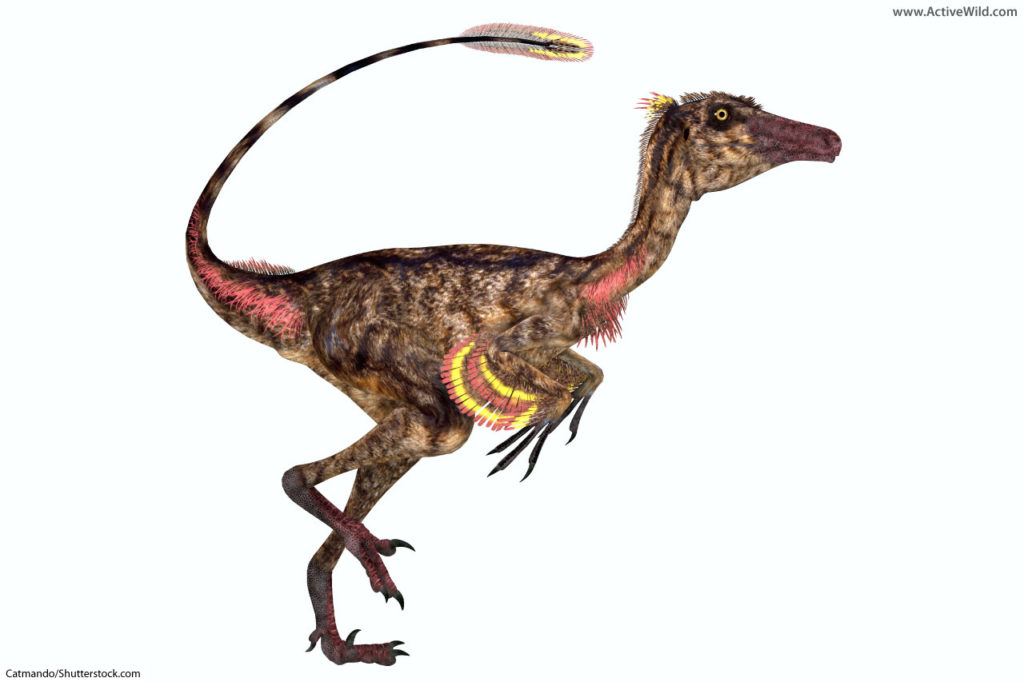
Troodon was a small, bird-like dinosaur of the Late Cretaceous Period. It grew to around 2 metres (6.5 ft.) in length, and would have stood waist-high to a man.
Despite its small size, troodon was well armed. It had sharp teeth, clawed fingers, and an enlarged, sickle-shaped claw on each of its feet. This intelligent dinosaur was fast, agile, and equipped with good eyesight.
- Find out more about Troodon here: Troodon Facts
Tyrannosaurus
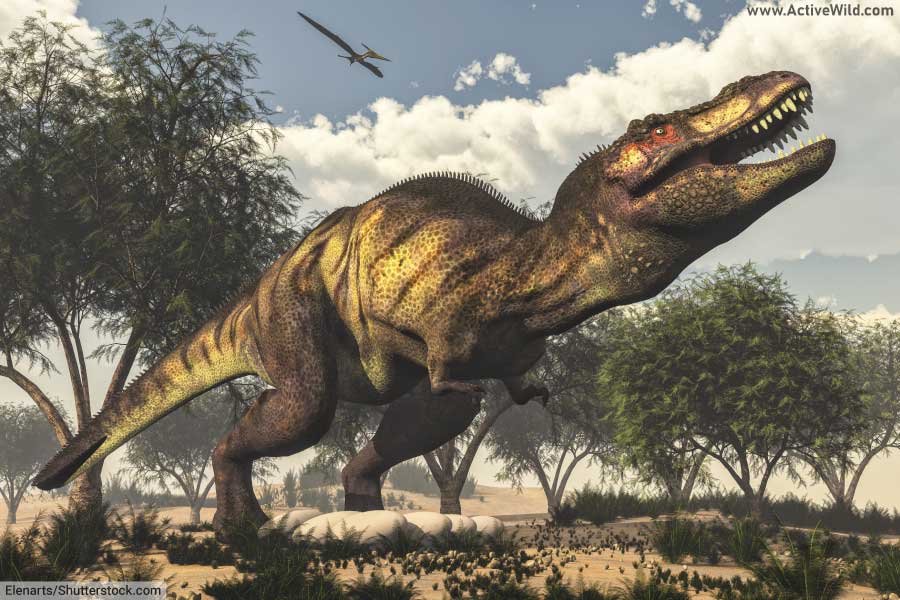
Tyrannosaurus is perhaps the most famous type of dinosaur in the world, and no list of dinosaurs would be complete without it! One species in particular, Tyrannosaurus Rex, is particularly well-known as being the archetypal 'killer dinosaur'.
Tyrannosaurus is one of the largest land-based meat-eaters of all time. Not only was it strong; it was also intelligent, fast, and equipped with excellent senses of both sight and smell.
One feature of tyrannosaurus is its huge skull. The skull would have been able to support large jaw muscles, giving tyrannosaurus a powerful bite.
Tyrannosaurus grew to around 12 metres (40 ft.) in length, and weighed up to 8 metric tonnes (9 short tons). It lived right to the end of the Cretaceous Period, becoming extinct along with all of the other non-bird dinosaurs in the Cretaceous-Paleogene Extinction Event.
- You can find out more about Tyrannosaurus Rex here: Tyrannosaurus Rex Facts.
Velociraptor
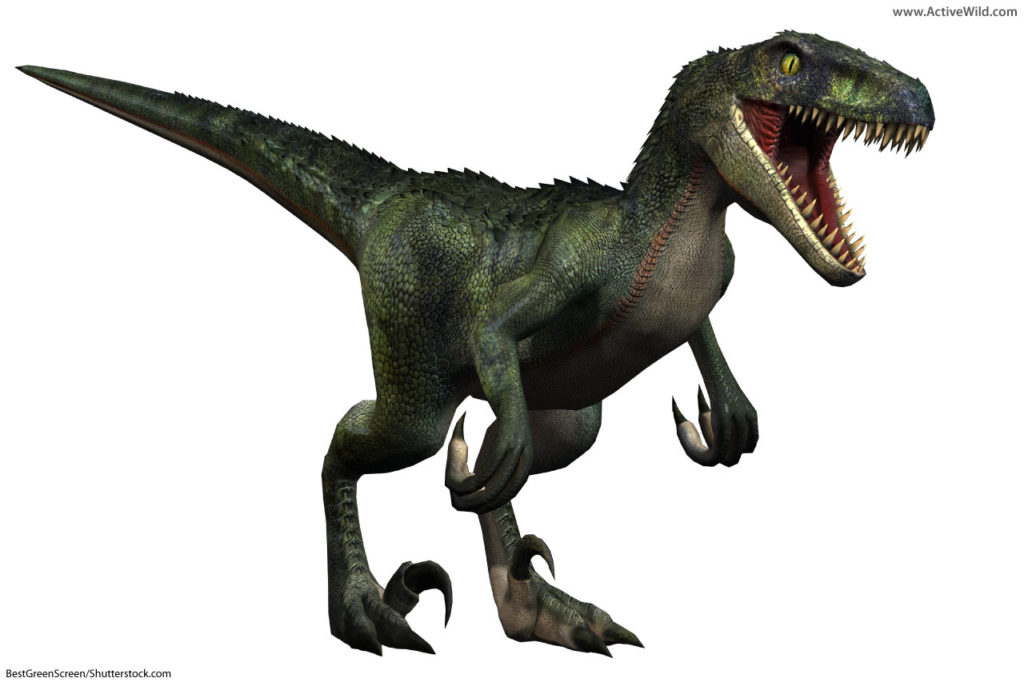
Velociraptor was a small, bird-like, predatory dinosaur of the late Cretaceous Period. Its name–which means 'swift plunderer'–accurately describes this speedy, fierce carnivore.
Velociraptor was armed with sharp teeth and sharp claws. Its most fearsome weapons were the large, curved inner claws on either foot. These were probably used not only for slashing and ripping, but also to grab and restrain the velociraptor's unfortunate prey.
In many films, velociraptor is portrayed as being taller than a man. In real-life, however, it would have been waist-high at most. It may also have been fully feathered.
- You can find out more about Velociraptor here: Velociraptor Facts.
List of Dinosaurs – Dinosaur Names with Pictures: Conclusion
We hope that you enjoyed this list of dinosaurs. We'll be adding new dinosaurs regularly so be sure to check back soon!
What's your favorite dinosaur on the list? Have we missed any out? Were there any on the list that you hadn't heard of? Let us know in the comments at the bottom of the page!
See More Dinosaurs!
You can see more awesome dinosaurs on the following pages:
- Triassic Dinosaurs List with Pictures & Facts
- Jurassic Dinosaurs List with Pictures & Facts
- Cretaceous Dinosaurs List with Pictures & Facts
Want In-Depth Dino Info?
You'll find in-depth info on your favorite dinosaur by clicking on its name in the list below:
- Abelisaurus Facts
- Albertosaurus Facts
- Allosaurus Facts
- Apatosaurus Facts
- Archaeopteryx Facts
- Baryonyx Facts
- Brachiosaurus Facts
- Carnotaurus Facts
- Diplodocus Facts
- Giganotosaurus Facts
- Gorgosaurus Facts
- Iguanodon Facts
- Megalosaurus Facts
- Parasaurolophus Facts
- Pterodactylus Facts
- Spinosaurus Facts
- Triceratops Facts
- Troodon Facts
- Tyrannosaurus Rex Facts
- Velociraptor Facts
More Dino Information at Active Wild
- You can find more dinosaur information here: Dinosaur Facts
- Learn more about the different periods of the Mesozoic Era: Dinosaur Periods
- Discover the different types of dinosaurs: Types of Dinosaur
Picture Guide to Different Dinosaurs
Source: https://www.activewild.com/list-of-dinosaurs-names-with-pictures/